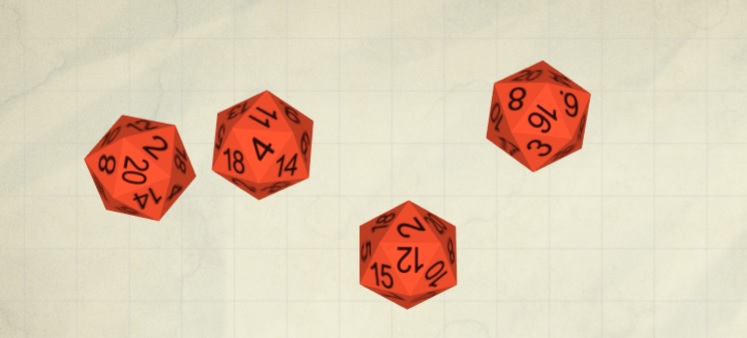Let’s continue going through the homebrew rules I currently use in my Storm King’s Thunder DnD 5e campaign. Today we’ll look at critical hits, as well as critical fumbles.
Critical hits
Critical hits are a part of the normal rules of 5e, but as written they are a bit nerfed compared to previous edition. Where 3e used damage multipliers on a critical hit (a natural 20), 5e instead opts for doubling the number of dice rolled.
This means that as written a critical can end up doing less damage than a normal hit, as it depends on what you roll. In my campaign we’ve upped the stakes by making critical hits really hurt. Instead of adding dice, you add the maximum dmg to your original roll. This means a 2d6+2 instead of becoming 4d6+2 with a critical hit it now becomes 2d6+14. A critical hit with these rules will always score more than a normal hit – and that seems fitting when we are talking critical hits. Beware that this also means monsters can become extremely deadly when landing a critical. An ogre goes from dealing 4d8+4 on a crit to dealing 2d8+20 on a crit, quickly flooring a low level hero.

Critical fumbles
Critical fumbles are probably one of the most homebrewed things to crop up in campaigns. This should mean it’s a popular addition to a DnD campaign no? Well, many players and dm’s really hate the idea of critical fumbles.
Why is hated so much? The obvious answer is that critical fumbles tend to happen quite a lot. You have 5% to fumble on each roll you make. This also becomes weirder as characters level up and get multiple attacks per round. Why? Since more rolls means more nat 1. So on the surface, a more skilled and powerful fighter will just become more and more clumsily and awkward in combat with a critical fumble rule. This also makes characters with weapons come up short as they risk fumbling more and more while spellcasters with fewer d20 rolls can sit back and enjoy their comrades embarrass themselves. Some also feel the fumble tables slows down the whole game, its a reason why there isn’t a critical table you roll on, just add on more damage, and most fumble rules include one or more table the DM has to find and roll on.
Why still have a fumble rule? The biggest reason is that many players and DMs just enjoy the random and chaotic nature of fumbles. As much as players cheer on a nat 20 they find the kind of enjoyment when someone rolls a 1. Things doesn’t always goes as expected and fumbles can add to the fun around the table.
What is important to remember when having a fumble rule? The first thing you need to make sure is to not make the fumbles too painful. There are several fumble tables you can find online, and almost all of them have a way too high chance of something seriously going wrong. And as mentioned, a fighter will end up fumbling quite a bit – don’t screw these characters over with stupid tables. Things like hit yourself or allies with normal isn’t a good idea. I’ve created my own table, and basically it includes minor problems. This includes things like dropping your weapon, losing an action or bonus action, provoking an attack as a reaction and so on. Still fun and chaotic things to happen during combat, but nothing that totally screws your players (like broken weapons and such).
As we play using the Roll20 app, a fumble rule doesn’t take any time to resolve. I’ve made a rollable table and just need to hit a button on my macro bar to make the fumble roll. I’ve also described the various fumbles so generic that they’ll fit either if a melee, ranged or spell combatant end up fumbling. We’ve also have a fumble rule on saving throws, and again it’s pretty simple with a rollable table on roll20 (again, not to extreme results).

